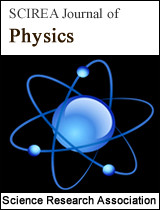The Proofs that the Einstein's Equations of Gravity Fields
Have No Liner Plane and Spherical Wave Solutions
DOI: 10.54647/physics14481 88 Downloads 13258 Views
Author(s)
Abstract
General relativity introduced the harmonic coordinate condition under the weak field condition and obtained the linear plane wave solution based on the Einstein's equations of gravitational fields, declaring the existence of gravitational waves. But so far, general relativity has never proved the existence of spherical gravitational waves. This paper proves that under the conditions of weak fields, the metrics of planar and spherical waves can not satisfy the harmonic coordinate conditions, unless the maximum amplitudes of gravitational waves are equal to zero, implying no gravitational waves. Therefore, the Einstein's equations of gravitational field can not be transformed into wave equations, and general relativity can not predict the existences of gravitational waves. This paper also discusses the problem of correctly using the coordinate conditions in general relativity and compares the harmonic coordinate conditions with the Lorentz gauge conditions of electromagnetic theory. It shows that the Lorentz gauge condition is naturally true for the electromagnetic waves in free space. But the harmonic coordinate condition of general relativity is not naturally trues and will result in that the gravitational wave amplitudes become zero, so their results are completely different.
Keywords
General relativity, Harmonic coordinate conditions, Linear plane gravity waves, Spherical gravity waves, Lorentz gauge condition, Gravity wave detection
Cite this paper
Mei Xiaochun, Huang Zhixun, Yuan Canlun,
The Proofs that the Einstein's Equations of Gravity Fields
Have No Liner Plane and Spherical Wave Solutions
, SCIREA Journal of Physics.
Volume 7, Issue 4, August 2022 | PP. 136-149.
10.54647/physics14481
References
| [ 1 ] | Mei Xiaochun, International Astronomy and Astrophysics Research Journal, 2022,4,(2): 26-45, https://journaliaarj.com/index.php/IAARJ/article/view/65. |
| [ 2 ] | Liu Liao, Zhao Zheng, General Relativity, Higher Education Press. 2004;88,133. |
| [ 3 ] | S. Weinberg, Theory of Gravity and Cos-mo-logy, Science Press, p. 296. |
| [ 4 ] | Fang Honglie, Optical Polarization Cavity and gravity wave Detection, Science Press. 2016;237. |
| [ 5 ] | Huang Hongwei, Engineering physics, 1999,Vol. 9 , p.4. |
| [ 6 ] | Abbott B P, et.al. Observation of gravity wave from a binary black hole merger, Phys Rev Lett,2016,116:06112 1~16. |
| [ 7 ] | ABBOTT B P,ABBOTT R,ABBOTT T D, et al(LIGO Scientific Collaboration and Virgo Collaboration). GWTC-1:A gravitational-wave transient catalog of compact binary mergers observed by LIGO and VIRGO during the first and second observing runs[J]. Physical Review X,2019,9:031040. |
| [ 8 ] | ABBOTT B P, ABBOTT R, ABBOTT T D, et al(LIGO Scientific Collaboration and Virgo Collaboration). GWTC-2:compact binary coalescences observed by LIGO and VIRGO during the first half of the third observing run[EB/0L], https://arxiv. org/abs/2010. 14527. |
| [ 9 ] | Mei Xiaochu, Huang Zhixun, The Measurement of Light’s Gravity Deflection of General Relativity were invalid, International Astronomy and Astrophysics Research Journal, 3(3): 7-26, 2021. https://www.doc88.com/p-58047140434257.html。 |
| [ 10 ] | James Creswell, Sebastian von Hausegger, Audrew D. Jackson, Hao Liu, Pavel Naselsky, On the Time Lags of the LIGO Signals, Abnormal Correlation in the LIGO Data, Journal of Cosmology and Astropartical Physics, 2017, August. |
| [ 11 ] | W. W. Engelhardt, Open Letter to the Nobel Committee for Physics 2016, https://www.researchgate.net/publication/304581873 |
| [ 12 ] | Mei X, Yu P. Did LIGO really detect gravitational waves?—The Existence of Electromagnetic Interaction Made the Experiments of LIGO Invalid, Journal of Modern Physics, 2016, (7):1098~1104, DOI: 10.4236/jmp.2016.710098, https://www.scirp.org/journal/paperinformation.aspx?paperid=67485 |
| [ 13 ] | Mei Xiaochun,Huang Zhixun,Policarpo Ulianov, Yu Ping,LIGO experiments can not detect gravitational waves by using laser Michelson interferometers, Journal of Modern Physics, 2016, 7, 1749-1761, http://dx.doi.org/10.4236/jmp.2016.713157 |

